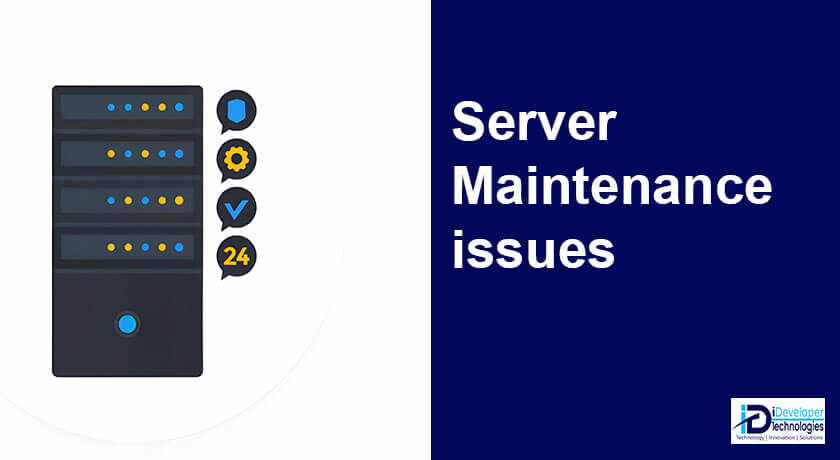Servers are the backbone of modern IT infrastructure, providing essential services and resources for businesses…

IT Service Desk in Kenya: The Features, Advantages, and Differences
The words ITSM, IT service desk, and help desk are sometimes used interchangeably to describe an organization’s IT end-user assistance. That’s not the case, though, as each one has certain characteristics of its own that support efficient IT operations. Specifically, an IT service desk serves as the provider and user’s “single point of contact” (SPOC).
What Is a Help Desk for IT?
A proactive and planned method of handling IT requests and events is an IT service desk. Compared to a help desk, which offers a more ad hoc approach, a service desk adopts a far more comprehensive approach to IT support activities.
The utilization of several ITSM activities, such as: is a crucial prerequisite for a service desk.
- Asset administration
- Management of incidents
- Problem-solving
- Management of service level agreements (SLAs)
- Knowledge administration
An IT service desk is “the sole point of contact between the supplier and the users,” according to the IT Infrastructure Library (ITIL). In addition to managing incidents and requests, it also controls user communication.
The duties of an IT service desk may resemble those of a company’s help desk procedures. However, an IT service desk’s goal is to proactively improve all IT operations at a more strategic level, whereas a help desk will take a more reactive approach to provide end users with support.
How Does an IT Help Desk Operate?
The role of an IT service desk is to serve as the end user’s single point of contact (SPOC) with an IT organization. This makes it possible for a service desk to manage a range of requests, such as distributing to support, establishing user passwords, and resolving account-related problems. The appropriate tool must have a number of key functions that center on request fulfillment in order to do this.
Protocols for Incident Management and Controls
The comprehensive control of the incident management process is the main objective of an IT service desk. This entails resuming services as soon as feasible so that SLAs may be met and end users can go back to work. Standard incident response procedures include:
- Supports
- Resolution
- Prioritizing
- Reporting
- Logging
- Asset management.
All employees inside a company will have access to a central system through an IT service desk. This indicates that all physical, digital, cloud, and software assets are kept in a single, easily accessible asset register. facilitating information retrieval, planning for maintenance, and other processes.
Offers Self-Service Resources
The usage of tools like comprehensive knowledge bases and frequently asked questions (FAQs) can help end users locate solutions without having to speak to a service desk technician. The usage of self-service tools has never been more crucial than it is now when more people work from home. In actuality, 91% of help desks intend to expand their self-service alternatives in the future.
What Advantages Do IT Service Desks Offer?
Any customer-focused organization’s IT environment can be transformed by an IT service desk, which can do everything from cutting costs to simplifying scalability procedures. So much so that companies can take advantage of a number of advantages when deciding to use a tool.
IT Help Desks Increase Productivity
IT service desks are recognized for their ability to assist with swiftly removing and resolving any issues that staff members experience. This not only enables organizations to better plan and track their IT-related goals, but it also enables end users to return to work faster than manual techniques would permit. The numerous capabilities and characteristics of a platform enable quick identification of a fix for end users. In particular, these include
- Live chat assistance
- A multichannel encounter
- A comprehensive knowledge foundation
- Ticketing procedures
Businesses deciding to adopt a live chat support function are a crucial component in increasing first-time fixes and enhancing efficiency. Despite the fact that the majority of service desks are still reached by phone (98%) and email (85%), 31% of service desks now offer support through live chat.
Enhance the quality of the service
Users rely on IT specialists and technicians to assist with their daily tasks within a business. However, when a firm grows, support teams begin to get swamped with IT problems, which can lower the level of assistance a user receives. The ideal answer, in this case, is to employ an automated IT service desk.
End users can follow the progress of their tickets and get useful information about their problems. When a technician isn’t accessible, a self-service portal with a library of fixes and solutions is offered to the user.
Increase visibility and communication
Visibility is crucial in an IT organization, whether it’s concentrating on managerial responsibilities or staff updates. An IT service desk improves visibility across the entire organization. This enables employees from various departments to be aware of what is going on throughout the company, including current technical problems and the location of IT hardware.
Analytical Reporting & Detail
Being able to collect data to aid in making wise and strategic decisions is a big advantage. Businesses can improve their IT services by highlighting abandon rates, response times, and common problems.
The reporting metrics of a service desk not only provide information on the requirements and preferences of an end user, but they also enable businesses to identify areas where their help may be strengthened. Help managers can identify which of their agents is more adept at offering technical support than others by using key performance indicators (KPIs). This is very useful for users like managers and executives when it comes to completing activities that are of high priority.
What Differs a Service Desk From a Help Desk?
When it comes to IT support tasks, there is a lot of misunderstanding due to the tendency to interchange the terms ITSM, help desk, call centers, and service desks. But there is no denying that each of them has distinct tasks and responsibilities.
How Do Help Desks Work?
A help desk serves as the hub of a company’s customer support operations and offers precise and effective solutions to end-user issues.
A help desk is often made up of a group of support personnel who work on behalf of a company to offer support in the most efficient manner. Businesses that do this may offer clients great service, whether those customers are internal or external (employees).
Help desks give companies the following benefits by implementing policies that concentrate on providing end-user support:
- Ensure client and worker satisfaction
- Deliver support on par with rivals’ levels
- Boost rates of customer retention
The usage of software-as-a-service solutions, such as Help Desk Software, helps automate a company’s help desk procedures. The activities of a support team are streamlined and a help desk’s overall productivity can be improved by digitizing customer support operations.
Help Desk vs. IT Service Desk
Compared to a help desk, an IT service desk offers a wider selection of tools. For instance, it is in charge of
- providing a service to customers
- Taking care of service requests
- employee orientation
- management of metrics
- Infrastructure Surveillance
While a help desk is mostly in charge of:-
- Giving assistance to users
- Delivering a quick fix for issues
- Monitoring and controlling tickets
- Constructing knowledge bases



